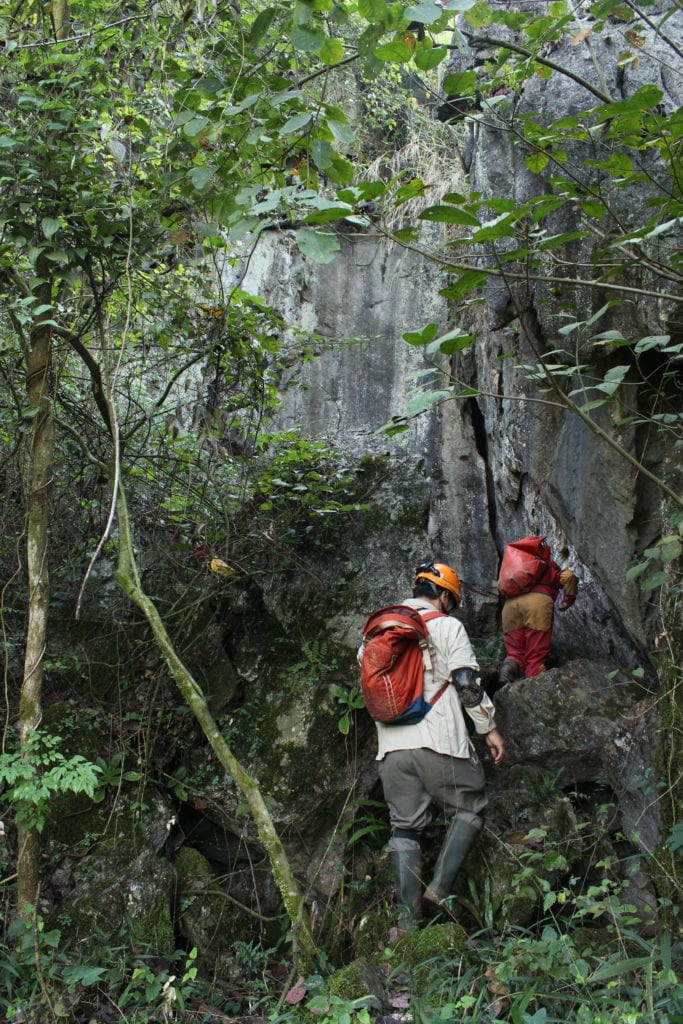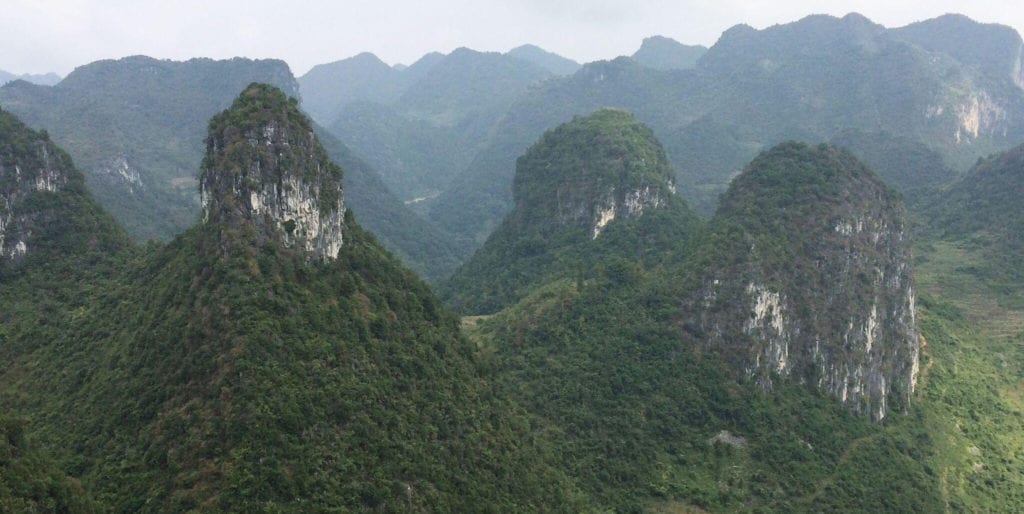
Background
Ranging from a humid tropical to subtropical climate, the South China Karst (SCK) represents the largest contiguous karst area in the world. Situated within Guizhou Province, Yunnan Province, Guangxi Zhuang Autonomous Region, and Chongqing Municipality, the SCK covers approximately 603 square miles (971 km2). It supports a panoply of karst landforms including tower karst (fenglin), pinnacle karst, cone karst (fengcong), natural bridges, gorges, and expansive cave systems. Importantly, the SCK contains several UNESCO protected areas including the Maolan Biosphere Preserve and the Shilin UNESCO Global Geopark.

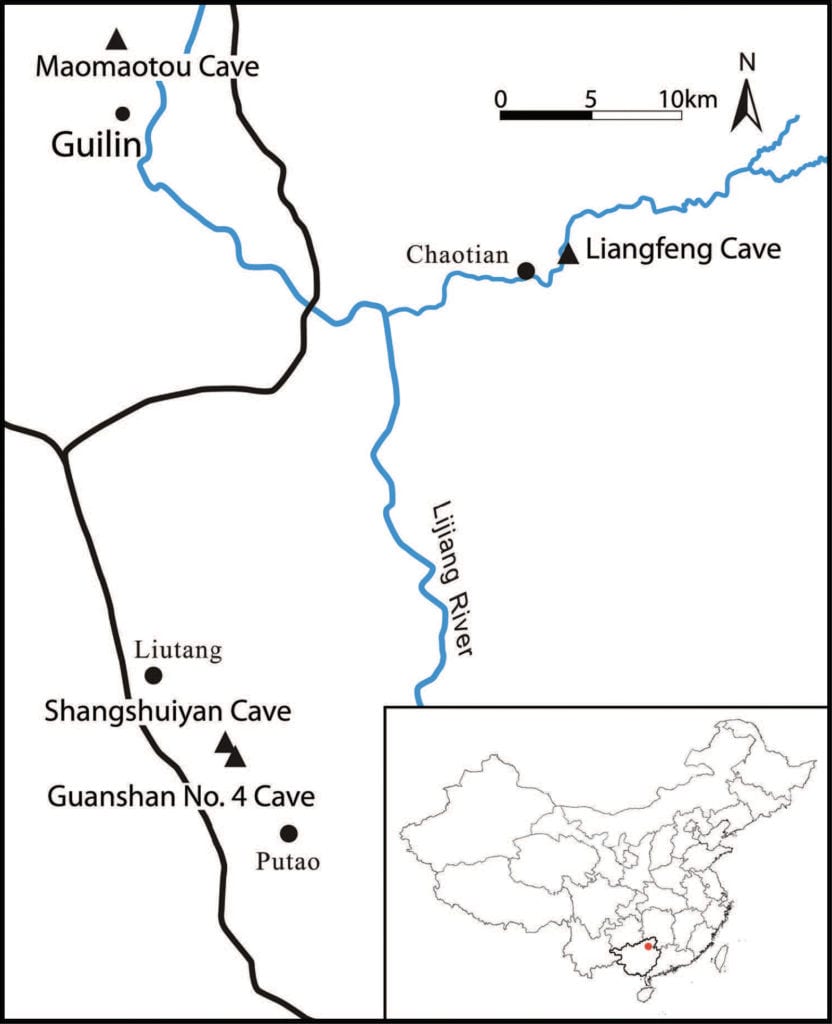
The SCK also boasts an impressive diversity of cave-dwelling animals. With rich and complex subterranean waters, the region is home to the highest diversity of cavefishes. With 148 known species, one-third of the world’s known cavefish species occurs within southern China. Concerning troglobionts (terrestrial subterranean-adapted organisms), more than 150 invertebrate species have been described to date. This includes at least 15 pseudoscorpion and 37 millipede subterranean-adapted species. Additionally, at least 42 of China’s 77 cave-roosting bat species are found within this region.
As new species are discovered (and formally described), and researchers more thoroughly characterize cave ecological communities, the South China Karst is expected to emerge as a biodiversity hotspot.
In November 2016, Jut and colleagues conducted biological inventories within four caves in the northeastern most extent of Guangxi. All caves were within an approximate 18 mile (30 km) radius of the city of Guilin. These features were selected based upon two criteria: (1) sufficient length to support deep zone conditions, and (2) the availability of a cave map. Project objectives were to discover new endemic arthropod species and provide recommendations to best manage these species — and, in so doing, foster future research in the region.

Results
Jut and his team discovered at least 10 new species of cave-dwelling arthropods. Of note, they formally described and named two troglomorphic (subterranean-adapted) pseudoscorpion species and six millipede species (including four troglobionts). In papers on these invertebrate groups, Jut and colleagues also summarized the total number of species for each group and the number of caves for which they are known to occur within the SCK. Nine of the 10 known SCK subterranean-adapted pseudoscorpions are considered single cave endemics. Incidentally, this includes the two troglomorphic pseudoscorpion species described by Jut and his collaborators, which are known from one cave.
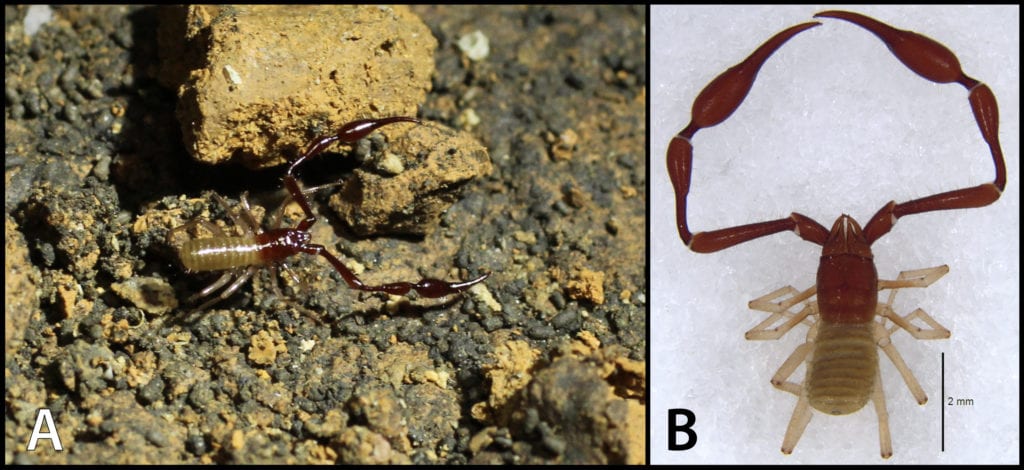
For troglomorphic millipedes, 24 of the 38 SCK species (or 64%) were documented in one cave and thus tentatively considered single cave endemics. Moreover, one species, Hyleoglomeris rukouqu, may be restricted to the vegetation community occurring within the cave entrance and may be a ‘disturbance relict’. Additional research of caves at proximity to the type locality, and with similar entrance vegetation communities, will be required to test this hypothesis.
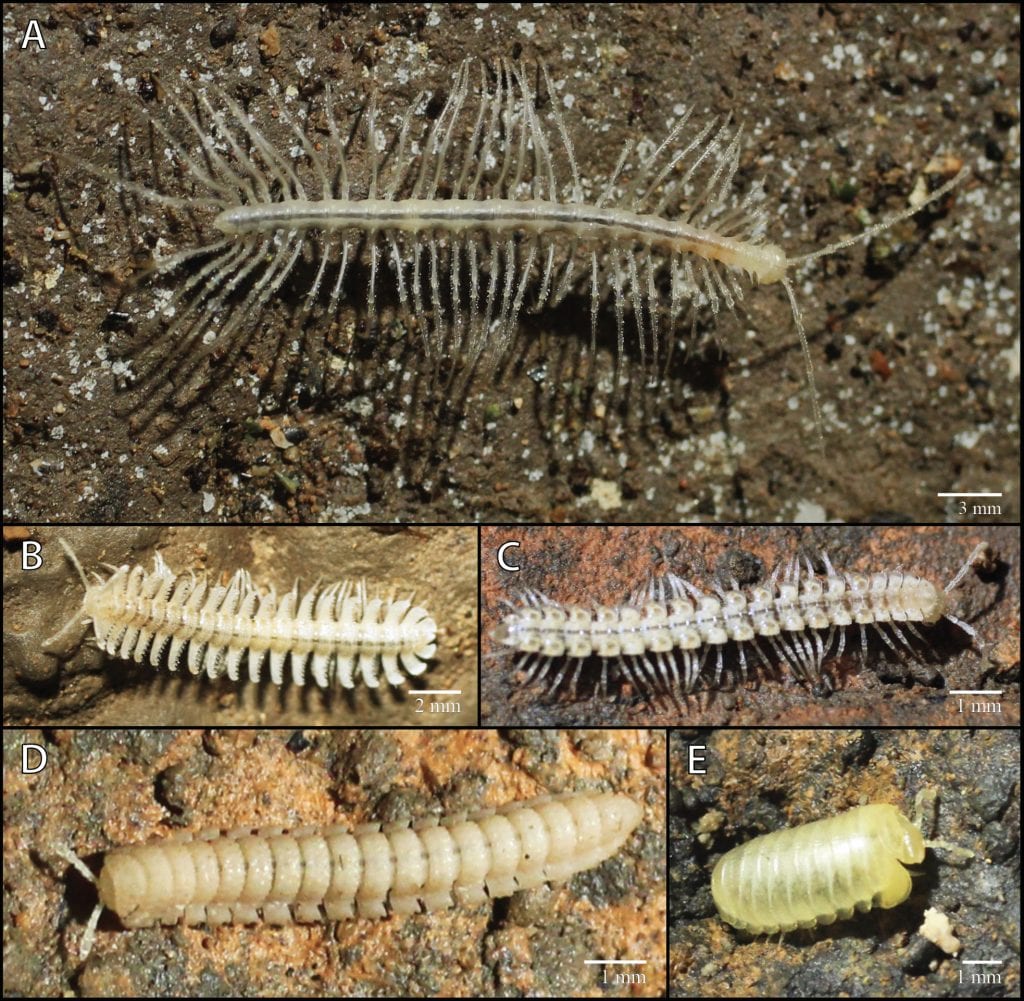
Future Research and Management
Use of systematic sampling: Few caves in the SCK have been examined using an all macro-taxa systematic framework. To best assess the biological diversity and identify management needs, such an approach is required. By applying a systematic approach, caves may be evaluated with regard to their biological diversity, the endemic species they support, and the vulnerability to human activities.
Molecular analysis: At least 14 troglomorphic millipede species occurred in more than one cave. Maximum distance between caves ranged from 37 to 86 miles (60 — 138 km). Because most troglomorphic arthropods considered short-range endemic species and valleys incised by rivers often isolate populations (which give rise to new species) — at least three millipede species have curious distributions which should be further examined using genetic techniques. While morphologically similar, they may actually be genetically distinct – potentially representing different clades or even species. Such research could yield invaluable data concerning both speciation and biogeography of subterranean-dwelling animals in the SCK. Importantly, this information could prove useful in guiding future environmental policy.

Protection of caves with single-cave endemics: As most troglomorphic pseudoscorpions and millipedes in the SCK are considered single cave endemics, these animals should be considered of conservation and management concern. Additionally, many caves in southern China also support single cave endemic cavefishes. These species and the caves where they occur should be managed in accordance with the sensitivity of the species and their habitat.
Federal protections needed: Despite the astounding cave biological diversity found in China, there are no government regulations, nor is there a government agency responsible for managing and protecting cave resources. Unfortunately, development projects typically proceed in cave-bearing regions, and tourist caves are developed, without consideration for subterranean resources and the rich biodiversity they often support. While environmental conditions are improving and environmental regulations have been strengthened in China, caves and the unique animals they support are likely to remain imperiled as human activities continue to expand. Thus, monitoring the environmental conditions of the surface and subsurface of caves identified as supporting rare endemic species populations and/or sensitive ecosystems is recommended.
Further Reading
